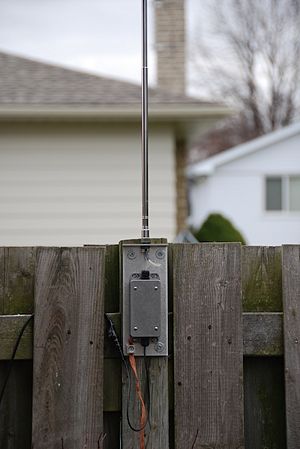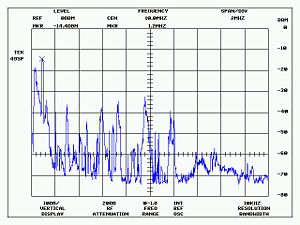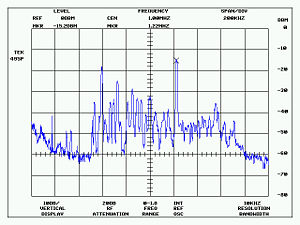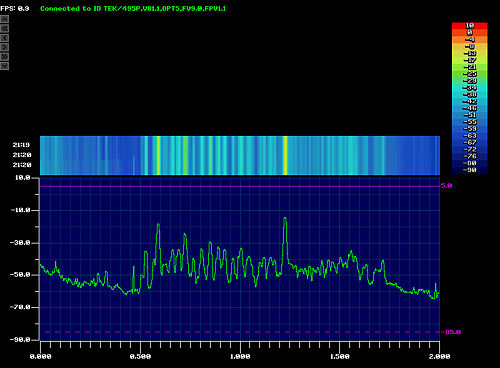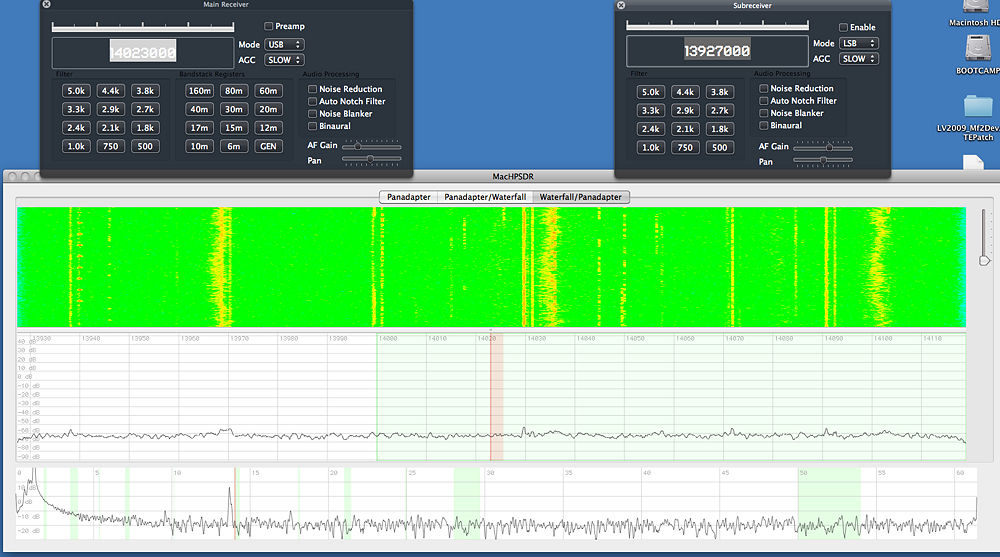Antenna Performance Tests
Active Antenna and Mercury
One of the great features of Mercury is its wide band capability. Most amateurs have antennas that are tuned to one amateur band. Often, these antennas do not perform well when used to listen on other frequencies. One type of antenna that is suited to wide band performance is an active antenna.I purchased a Z1501D Active Antenna and Z1203A Active Antenna Coupler from Clifton Laboratories. These are both kits that are straightforward to put together and in my opinion are first class.
The active antenna at my station is using a 60 inch whip and the unit is mounted on a wooden fence post approximately 1.25 m above ground. I have a ground plate (1.2m long piece of electrical bus) buried in the earth about 0.6 m below ground.
Tests
The following is a screen shot of a wide band scan (0-20 Mhz.) of the output of the antenna coupler when connected to a Tektronics 495P Spectrum Analyzer.
The second plot of the same spectrum was captured by KE5FX's excellent Spectrum Surveillance Program which connects to to my spectrum analyzer and controls it using the GPIB port.
In my present configuration, the ADC in Mercury will overload with the preamp on when connected to the active antenna . To use the preamplifier for the upper HF bands, it will be necessary to add a hi pass filter to reduce the AM broadcast contribution to the receiver. You can see the 0-60 Mhz band scan from Mercury when using MacHPSDR in the next picture.
by Rick VE3MM
